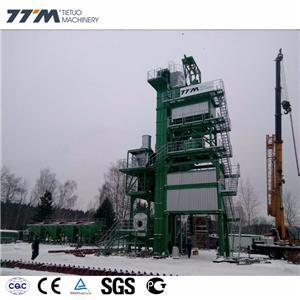Buy Supply hot mix tar recycling of asphalt pavement Factory Brands
hot mix tar recycling of asphalt pavement
Supply tar recycling Brands
Researchers know how cities mitigate the effects of rising temperatures. First, they can replace some concrete and asphalt with grass and trees, cover asphalt roofs with reflective white materials, remove hard roads that cause flooding, and replace permeable surface materials to allow water to pass through.
Around the world, calls for action to deal with the climate crisis are becoming increasingly urgent. The United Nations has warned that if bold action is not taken to curb global warming by 2030, the consequences will be catastrophic.
To mitigate the effects of climate change, officials have proposed dozens of changes, from creating more pedestrian-friendly communities to banning the use of foam containers. However, some communities known as "heat islands" will need more help because they already feel more harmful effects of global warming.
Heat Island tends to have more sidewalks and fewer trees to provide shade. These families have a lower income, need to deal with more chronic diseases, and need to make more emergency calls. Planners say these problems are the result of decades of discriminatory laws and fiscal policies.
Using stable full-depth backfilling (SFDR) technology, road builders mix the old pavement (hot mix or asphalt pavement) and on-site base aggregate with asphalt pulverization, and build a thick partially bonded base layer on the basis of the remaining aggregate of the original roadbed.This process eliminates the cost of removing old roads and bringing in new and expensive aggregates, which are limited in supply.
Cracks and other damage to old pavements are usually reflected in new asphalt and concrete coverings. On the other hand, SFDR roads tend to avoid reflection cracks while meeting the growing load demand, and aging road systems are reducing the funding environment.
Buy hot recycling of asphalt pavement
In order to make roads stronger and more resistant to heavy load damage, most repair methods require thicker and wider roads.SFDR may provide a way to build stronger roads without widening roads, transporting old materials from the road site, or transporting new aggregates to the site.
In 2016, SFDR's performance requirements enabled MnDOT and the local road research committee (LRRB) to evaluate SFDR mixtures by establishing test, modeling and analysis methods, bringing them closer to the design standards of the technology. Minnesota designers lack a way to rate SFDR design structural design to quantify how the mixture will meet the needs of the new road. Before adding the overlay, it is still impossible to quantify how much strength can be obtained by adding stabilizer and paving the recycled pavement into a thick asphalt pavement base.
It is clear that several key trends are prominent in the asphalt plant sector. Manufacturers have invested a lot of time and money in developing new asphalt factory solutions to meet the needs of customers, as well as important industry needs.
First, the world needs to recycle asphalt. It is clear that simply trucking crushed cutting to landfills is an expensive and shameful waste of reusable materials. All leading asphalt factory manufacturers now offer equipment with some form of recycling capacity. The use of (RAP) on recycled asphalt pavement varies widely, and the most compact mobile factories can be configured with 15-20% RAP feed. At the same time, as long as the necessary quality requirements are met, some large and highly complex asphalt plants (continuous and batching types) can use up to 100 per cent RAP in feed.
hot mix recycling Factory
Second, the need for easy transportation and faster commissioning has led the company to develop small factories suitable for standard containers that can be trucked to the site.These devices are usually equipped with electronic equipment, so installation may simply mean cleaning up a suitable space, loading one container on another, connecting cables, and installing material storage and transportation units.
Most alternative roads need to bear a heavier commercial and agricultural burden than the original roads. The researchers tried to determine the structural value of SFDR in mixtures using various stabilizers to help designers better adapt to SFDR repair and increase load requirements.
The researchers visited 19 road stations in Minnesota, looked at 24 road sections, and investigated road conditions, cracks and potholes in each section. The team used a dynamic cone diameter meter (DCP) to test the stability of each section and took out three paved cores from each section for laboratory testing.
The two researchers used dynamic cone transmitters to test the infrastructure strength of rural pavements.
The two researchers used dynamic cone transmitters to test the infrastructure strength of rural pavements.
SFDR pavement may be difficult to coring correctly, and most samples fail before laboratory testing.




